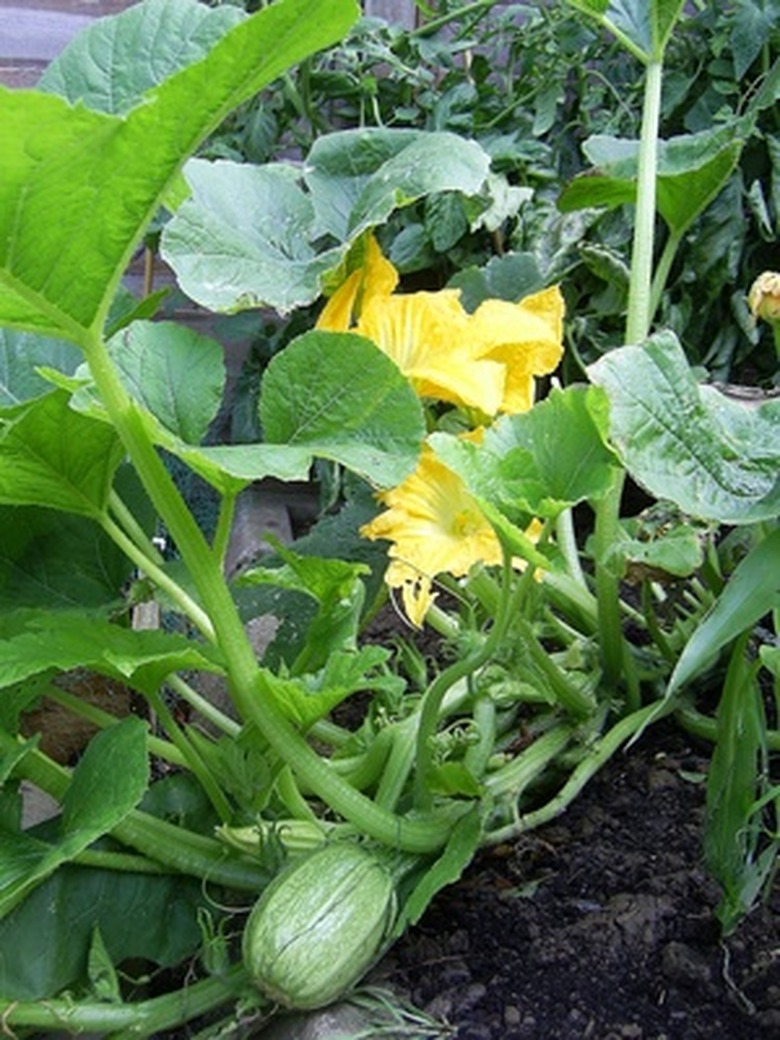What Are Good Vegetables To Grow On Hillsides?
Hillside gardening presents many challenges. Rain washes valuable topsoil and nutrients down the slope. Top-heavy vegetables such as tomatoes are likely to topple over. North-facing slopes can be shady and cool, while south-facing hillsides can bake in the summer sun. Select vegetables that are well suited to your particular hillside growing environment to ensure that your vegetable garden thrives.
Green Leafy Vegetables
Green leafy vegetables such as spinach, lettuce, chard, arugula and radicchio grow best in cool, consistently moist conditions; however, they can also rot, especially the leaves against the ground, with inadequate air circulation. Oregon State University suggests planting green leafy vegetables on a north slope, as a north-facing hillside will be cooler and shadier than the surrounding environment. The slope will also aid in air circulation and drainage, encouraging the best growth from the salad-green crops.
- Hillside gardening presents many challenges.
- The slope will also aid in air circulation and drainage, encouraging the best growth from the salad-green crops.
Corn and Dry Beans
The University of Idaho Cooperative Extension Service notes that a south-facing or southeast-facing slope will warm earliest in the spring and receive maximum sunlight, thereby providing the longest growing season possible in areas with limited frost-free time periods. Even gardeners in shorter-season areas can grow many varieties of corn and dry soup beans on a warm south-facing hillside. Both of these crops also require little maintenance throughout the growing year, which minimizes erosion and compaction of the hillside soil. The Idaho Extension advises orienting crop rows in a north-south direction across the hillside to ensure maximum sun exposure.
Squash and Cabbage
The University of Tennessee Extension advises that flat garden beds may be the most desirable configuration for all-around gardening purposes, but a modest slope will help improve garden drainage. Good drainage benefits summer and winter squash crops, by helping to ensure that maturing fruits don't rot on the ground. Squash also requires warm soil and plenty of room to sprawl, as most varieties grow on long unruly vines. A south- or west-facing hillside provides full sun, and vining squashes may be planted along the top of the hillside and allowed to run down the slope. However, the University of Idaho Extension warns that even on a warm hillside, cold air will gather, creating cool microclimates at the bottom of the slope. Take advantage of this effect by planting cool-loving cole crops such as cabbage—which also has deep roots to help hold back hillside erosion—at the base of the slope.
- The University of Idaho Cooperative Extension Service notes that a south-facing or southeast-facing slope will warm earliest in the spring and receive maximum sunlight, thereby providing the longest growing season possible in areas with limited frost-free time periods.
- A south- or west-facing hillside provides full sun, and vining squashes may be planted along the top of the hillside and allowed to run down the slope.
